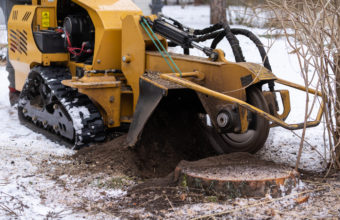When cutting large trees and limbs, the best tool to use will depend on various factors such as the size of the tree or limb, the type of wood, the location of the tree, and personal preference.
Here are some common tools used for cutting large trees and limbs…
- Chainsaw – Chainsaws are versatile tools that are widely used for cutting trees and limbs of various sizes. Gas-powered chainsaws are typically preferred for larger trees and heavier-duty cutting tasks, as they offer more power and cutting capacity. Electric chainsaws can also be suitable for smaller trees and limbs, especially in situations where noise or emissions may be a concern.
- Hand Saw – For smaller limbs or pruning tasks, a hand saw can be an effective tool. There are various types of hand saws available, including bow saws, pruning saws, and folding saws, each with its own advantages and limitations. Hand saws are lightweight, portable, and easy to maneuver, making them suitable for precision cutting in tight spaces or at heights.
- Pole Saw – Pole saws are specialized tools designed for cutting tree limbs at heights. They consist of a saw blade attached to an extendable pole, allowing users to reach high branches without needing to climb a ladder or use a bucket lift. Pole saws are available in manual (hand-powered) and powered (electric or gas-powered) versions, with powered pole saws offering greater cutting capacity and efficiency.
- Chainsaw Lopper Attachment – Some chainsaws come with lopper attachments that allow users to cut limbs with a chainsaw while standing on the ground. These attachments can extend the reach of the chainsaw, making it easier to cut higher limbs without the need for a ladder or climbing gear.
- Axe or Maul – Axes and mauls are heavy-duty cutting tools typically used for splitting wood, but they can also be used for felling small trees or cutting larger limbs. Axes are designed for chopping, while mauls are used for splitting wood along the grain. Using an axe or maul requires more physical effort and skill compared to using a chainsaw, but they can be effective for certain cutting tasks, especially in situations where access to power tools is limited.
When choosing the best tool for cutting large trees and limbs, consider factors such as safety, efficiency, ease of use, and the specific requirements of the job. Proper training, protective equipment, and adherence to safety guidelines are essential for safe and effective tree-cutting operations. If you’re unsure about the best tool or method for cutting a particular tree or limb, it’s advisable to consult with a certified arborist or tree care professional for guidance.






